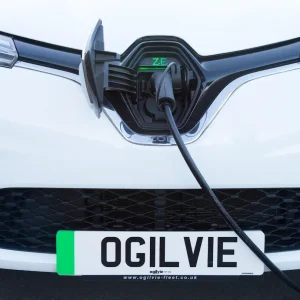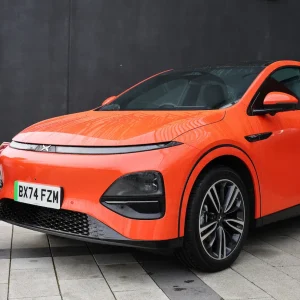The amount of different bodystyles available on the new car market has done nothing but increase since the turn of the century. Manufacturers are desperate to carve out the next new niche and have a pioneering vehicle on their hands that’s a hit with fleet and retail customers alike.
As a result, crossovers such as the Nissan Qashqai, the Skoda Yeti and the Volvo XC60 – and small SUVs along the lines of the VW Tiguan and the Ford Kuga – have come onto the market in their droves.
They’ve also provided a practical alternative to traditional lower and upper medium models, gaining in popularity and residual value strength as a result, and subsequently establishing themselves as strong second-hand sellers.
Simon Henstock, operations director at remarketing firm BCA, believes the used market is crying out for more examples of vehicles with alternative bodystyles.
“Crossovers and SUVs are very popular with motorists because they are both fashionable and practical, and even with growing numbers in the marketplace this sector remains relatively under-represented in the used car market.
“Professional buyers also like SUVs because they are attractive retail propositions, but are fussy over condition and mileage and expect to see a substantial service history – preferably with the supplying dealer.”
The adverse effect of that popularity is that such models can be quite expensive. Henstock continues: “The critical factor is inevitably price. SUVs can look expensive when compared with the traditional alternatives – hatches, saloons and estates – which are available in large numbers at a variety of price points.”
Rob Rossiter, remarketing manager at leasing company ALD Automotive, thinks that there’s now a consistently strong demand from the retail sector for these vehicles, so they’re likely to continue selling well: “I do think there is a core group of people who really aren’t looking beyond traditional styles of vehicles, which means that the manufacturers of the Golf, Focus, Astra and Ceed aren’t in any immediate danger.
“But it’s clear there are people who wish to stand out in the car park, and some of the crossover-style vehicles do tick a lot of boxes for them in the way they look and the practicality of what they offer.”
If the dependable popularity and the residuals of such models is to be believed, then there’s arguably a case for procuring them instead of traditional lower and upper medium vehicles, providing they fit the business profile.
The leasing industry has yet to be convinced they’re a replacement for the likes of VW Golfs and Vauxhall Astras, though, as James Hopkins, head of remarketing at Leaseplan, explains: “Anything that is mainstream and affordable seems to be selling particularly well at the moment, so there does seem to be a preference for smaller vehicles.
“As always, sale value does depend on a good service history and reasonable mileage; however, bigger lower-spec vehicles are selling less well than their smaller counterparts at the moment.”
ALD’s Rossiter agrees that a good model mix is worthwhile, but you’d never want to replace conventional models entirely.
“At my end of the business, I would like to see some standard lower medium hatchbacks in among my returns as well as some of the newer crossover-style vehicles. The lower medium sector is also very competitive with some excellent models available. Strong residuals are not exclusive to the crossover sector.”
Despite BCA’s belief the sector is under-represented, the Nissan Qashqai, which is widely credited with being the first serious crossover and the model that started the trend, has sold in vast numbers. It has also managed to defy its volumes and maintain strong residual values, having been hailed used car of the year by valuation firm Cap in 2011 and 2012.

Not everyone agrees that the Qashqai or any other popular crossover or SUV is as much of a sure thing in terms of residuals, though. Leaseplan’s Hopkins thinks the Nissan’s previously impenetrable RVs have had their day.
“In our experience, crossovers such as the Qashqai no longer hold such a strong resale value. Too many are now available due to their success in fleets, and the second-hand market demand is not yet there.”
He also challenges the views of BCA and ALD by suggesting that crossovers and SUVs aren’t automatically blessed with good values and guaranteed strong sales performance, saying that such models are quite sensitive to specification and trim level: “It depends very much on individual vehicle specifications. With these types of vehicles we often see that the used market price is hugely influenced by options like leather seats and in-built satnav.
“If it has those specifications it is likely to sell at a better price, and if not, this type of vehicle will often sell poorly, relative to Cap value.”
BCA’s Henstock agrees that, while popular, vehicles with alternative bodystyles need to be specced properly in the first place to get the kinds of returns that are being expected of them come defleet time.
“However,” he says, “a combination of an attractive retail colour and a good specification makes for a very saleable SUV or crossover. As these are not typical ‘fleet’ cars or even typical 4x4s, hard-worked examples need to be competitively valued.”
Rossiter surmises that, over time, the model mix hitting the used market will continue to diversify, which if anything will have a beneficial effect for fleets dispatching cars into the trade.
“I fully expect to see a continuation of what we see at present, which is a diverse mix of vehicles across most vehicle sectors. The result of increasing styles of vehicles available is a dilution of any one model being returned – and this is no bad thing,” he says.
The residual value expert’s view
 Glass’s Guide’s chief car editor, Rupert Pontin, says the comparative strength of the residual values for crossovers and small SUVs is largely down to the fact that their novelty has not yet worn off with the buying public.
Glass’s Guide’s chief car editor, Rupert Pontin, says the comparative strength of the residual values for crossovers and small SUVs is largely down to the fact that their novelty has not yet worn off with the buying public.
“At the moment most of these vehicles attract a higher residual value due to their rarity value,” he says. “As manufacturers have explored new niche markets, used car volumes have yet to increase significantly and as such the buying public see these as exciting and different alternatives to traditional models.”
He even cites particular models that are performing well on the used market at the moment: “At present we see particular strength in the Nissan Juke, Audi A1, Audi Q5, new Mercedes A-class, Skoda Yeti, Kia Sportage, Fiat 500 and Hyundai iX35. These are all pretty new models that are in short supply both in the new and used market.”
Pontin agrees with Leaseplan’s James Hopkins that the popular Nissan Qashqai may be on borrowed time when it comes to its previously acclaimed residual values: “There is, however, particular concern around the Qashqai as there are more of these becoming available this year and a new model is due soon.”
He also warns fleets of the dangers of putting all their eggs in one basket with bodystyles, suggesting that there’s no harm in going for a crossover or similar model in favour of, say, a lower medium equivalent if the boot fits, but it can be risky in the long run.
“If upfront cost and a robust forecast are evident then a funky desirable model will. give a greater return, but it can be a risk in a volatile market where production volume and the European market can quickly erode a niche sector,” he concludes.





